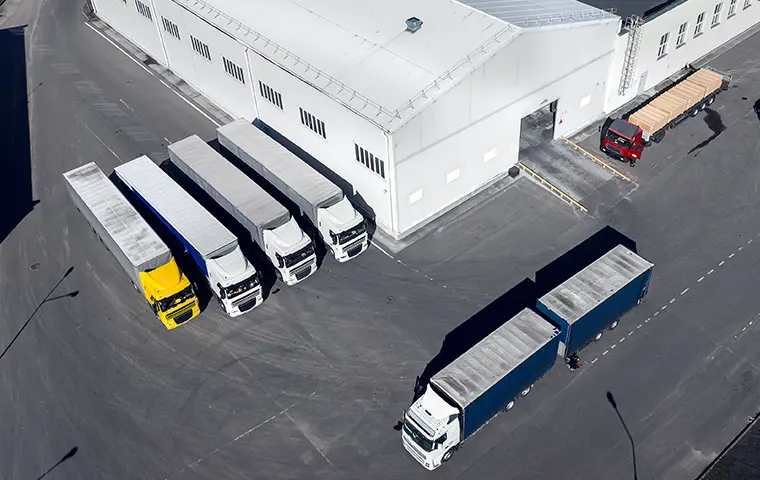The last few years have been particularly hard for the trucking industry. The pandemic has put a massive strain on the supply chain, not to mention making it more difficult to hire drivers and get parts for vehicles. Although the world is opening up again, it is a long time coming before things return to “normal” for the fleet industry. However, the trucking industry forecast for 2022 isn’t entirely bleak. There are some negatives and some positives to consider going forward. Let’s discuss our trucking industry outlook for the rest of 2022.
Continued Industry Growth
Freight tonnage is projected to grow 24% by the end of 2022. This means that revenue in the industry will likely rise 66%, according to the American Trucking Association. Markets like the online food delivery market are experiencing exceptionally high growth and are expected to reach $33.7 billion by 2026. While this growth is good for the industry, as it allows businesses to expand their services and grow, it also poses some challenges.
For example, high fuel costs and a lack of access to new vehicles, along with the continued driver shortage, may make it challenging to meet the demands of this new growth. Therefore, businesses will have to find creative ways to deal with the ongoing effects of the pandemic.
Driver Shortages
Driver shortages have plagued the fleet industry for years, and the pandemic has only worsened the problem. The American Trucking Association estimates that the trucking industry is short about 80,000 drivers, and this shortage will only increase. Therefore, many companies have started targeting new demographics when hiring their drivers. For example, women have historically only made up 7% of the fleet industry’s drivers, so many businesses are hoping to hire more women. They’re also looking to hire younger drivers, as the Boomer generation makes up many of the driving roles and will not be working in the coming years.
Technology Boosts
The importance of technology is ever-increasing. Especially with the industry's current struggles, it looks like technology is the only way to alleviate the pressure. Tracking technology is essential. Gartner predicts that by 2023, 50% of global product-centric businesses will invest in tracking technology. With this technology, businesses can track shipments in real-time, better servicing customers and creating more efficiency overall. Gartner also predicts that by 2024, 50% of supply chain organizations will use artificial intelligence and advanced analytics to organize their data and create actionable insights to improve efficacy and safety. The applications for applying technology in the fleet industry are endless. It just takes the proper investment to save businesses time and money.
Infrastructure Focus
As the trucking industry grows, the need for improved infrastructure grows with it. Infrastructure has been in the news a lot lately as the nation scrambles for funding for its crumbling roads and bridges. 42% of our 617,000 bridges are more than 50 years old, and over 46,000 of these bridges are structurally unsound. Meanwhile, 43% of our four million miles of roadways are in poor or mediocre condition.
How does this affect the trucking industry? 1.2 billion hours of productivity are lost every year due to freight bottlenecks. Drivers sitting idly in traffic add $74.1 billion in operational costs. The time spent idling has a massive toll on the environment as well, adding 67 million metric tons of CO2 emissions to the atmosphere.
This year, President Biden passed a major infrastructure bill to fund repairs and maintenance and offset this issue, but much more funding is needed. Road usage charging has been proposed as a permanent solution to the problem, meaning drivers would be charged based on how many miles they travel instead of being charged a gas tax. This would be a more long-term solution to eradicate the problem over time.
Driver Assist
Driver safety is of the utmost importance to any fleet, and these businesses are turning to technology to help them achieve their safety goals. Automated vehicles will likely play a large part in keeping drivers safe in the future by reducing the strain they face on the road. Autonomous vehicles have a wide array of benefits. They reduce the risk of impairments, such as tired driving, which often affects fleet drivers. They also obey all the rules of the road without fault. They are not prone to human error, which is the cause of 94% of accidents in the United States. We are moving towards autonomous vehicles in 2022, which means massive improvements in safety for fleets.
Keep Up with the Latest in the Fleet Industry
At Azuga, we know the ins and outs of the fleet industry like no one else, and we want to keep you informed. We update our blog regularly with all of the information you need to know about the latest tools, technology, and news you need regarding anything happening in the fleet world. We are constantly working to keep our technology in line with the times, so you can operate your fleet one step ahead of the game. Keep up with our blog to stay informed.








